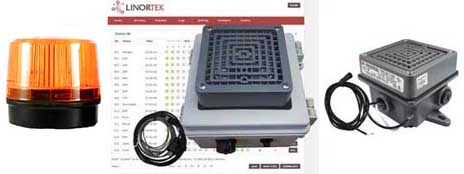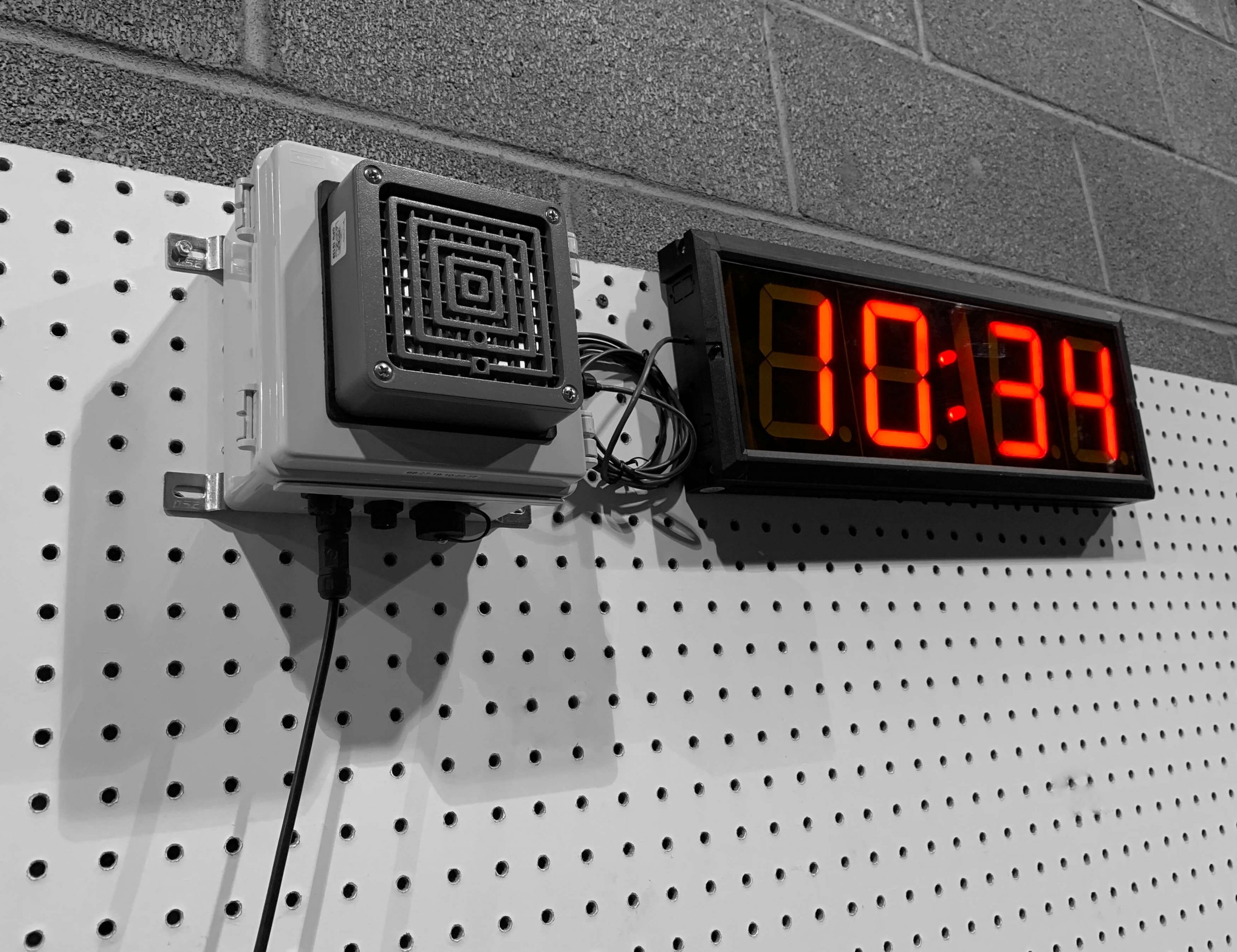Netbell-KB Web-Based Scheduled Shop Buzzer
The Netbell-KB is a compact, self-contained web-based break buzzer system for factories to build a fully automated web-based timed alert system for signaling shift changes, general alarm, breaks and process control signaling in areas of high ambient noise levels.
The system is built on a TCP/IP platform with a built in web server, which allows users to access, control, and schedule the buzzer accurately and effectively using an internet connection from anywhere.
The Netbell™-KB features a high quality 4 inch high output buzzer (100dBa @10' ) and a completely wired web controller installed within a NEMA-rated box; all software and mounting hardware required for installation is included.
It comes with up to 500 event schedules and 8 different settable ringing pulses for different events.
Own an existing time and attendance system?
Does it get the time from the online NTP Servers? If so, this can be set to get the time from the exact same source! Then everything is aways exactly on the same second.
p/n 01-910-00022
This has been going on for years:
People keep asking "How loud are your bells?"
Unfortunately, it's like describing a dinner at a restaurant. It depends on the environment.
Is it an empty room like a gymnasium? Does it have lots of rooms, or lots of background noise like a woodworking shop? Is this a warehouse with lots of rows of shelving and boxes of fabric?
Bells and buzzers all seem to max out at 102db. 102db is very loud.
110db is extremely loud, check out the YouTube video below.
In our experience, installing 2 to 3 bells or buzzers is much more effective than just one. Put one by the timer, then run wire out the another, 50 to 100' away. It won't be louder, it will just be more likely to be heard above all the background noise.
So, yours truly did some research recently (2016), this is interesting,
Using an Android phone decibel app, this is what we found:
**A bedroom at night in the country, windows closed: 28 - 32 db
**A bedroom at night in the city with the windows closed: 42- 46 db
**Office environment, people chattering: 62db
**American Airlines 737 inside. just behind the wing during takeoff: 86db
**Same jet, landing with the reverse thrusters on: 88db That ROAR you hear..
**Same jet, cruising for 3 hours, it's 82 to 86db. That's (partially) why flying is so tiring.
Shop buzzer's: 102db (Edwards, the ones we sell)
Other brands "hum" at 82 to 86.
Our bells test out at 98 to 103db depending on voltage
It seems that no one offers anything louder than 103db, unless it goes on a train, ocean liner, or fog horn. In some cases loudspeakers are used on farms; we don't have them, but our equipment will ring them. This is 110db, a train horn on an obnoxious person's pickup truck. In a working environment, this would clearly cause accidents.
https://www.youtube.com/watch?v=TiWNw0A1Ijg&feature=related
More bells or horns does not make it louder, it just makes it more pervasive - easier to hear through the machinery, across the rooms, over conversations and running equipment like compressors, lifts, packing tape, all that.
July 5, 2018 more to know:
A Fire Station Siren is 106 decibels. Our bells and buzzers are typically 98 to 102.
NetBuzzer with add-on amber strobe lights
NetBuzzer with additional low voltage buzzer and low voltage strobe light

